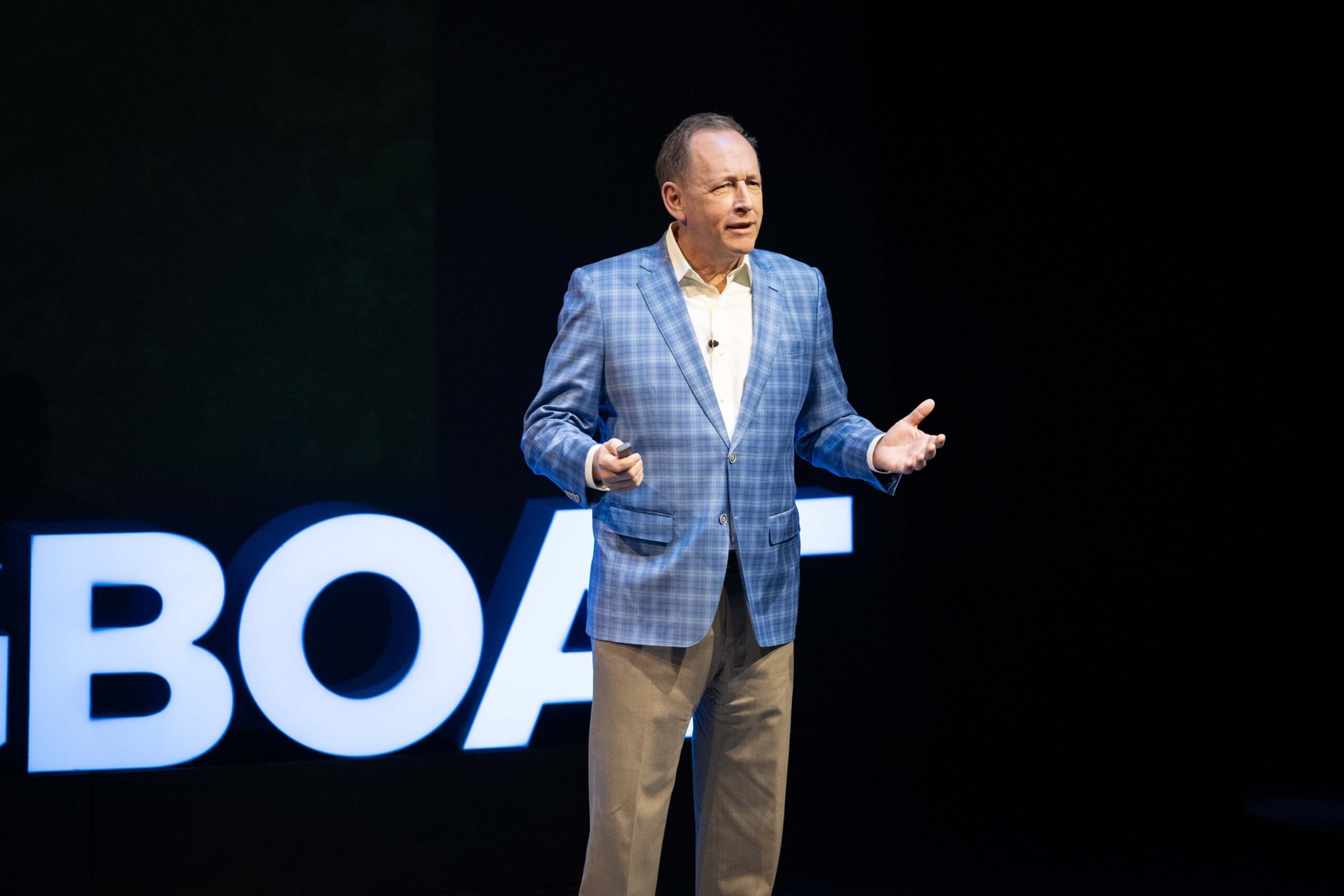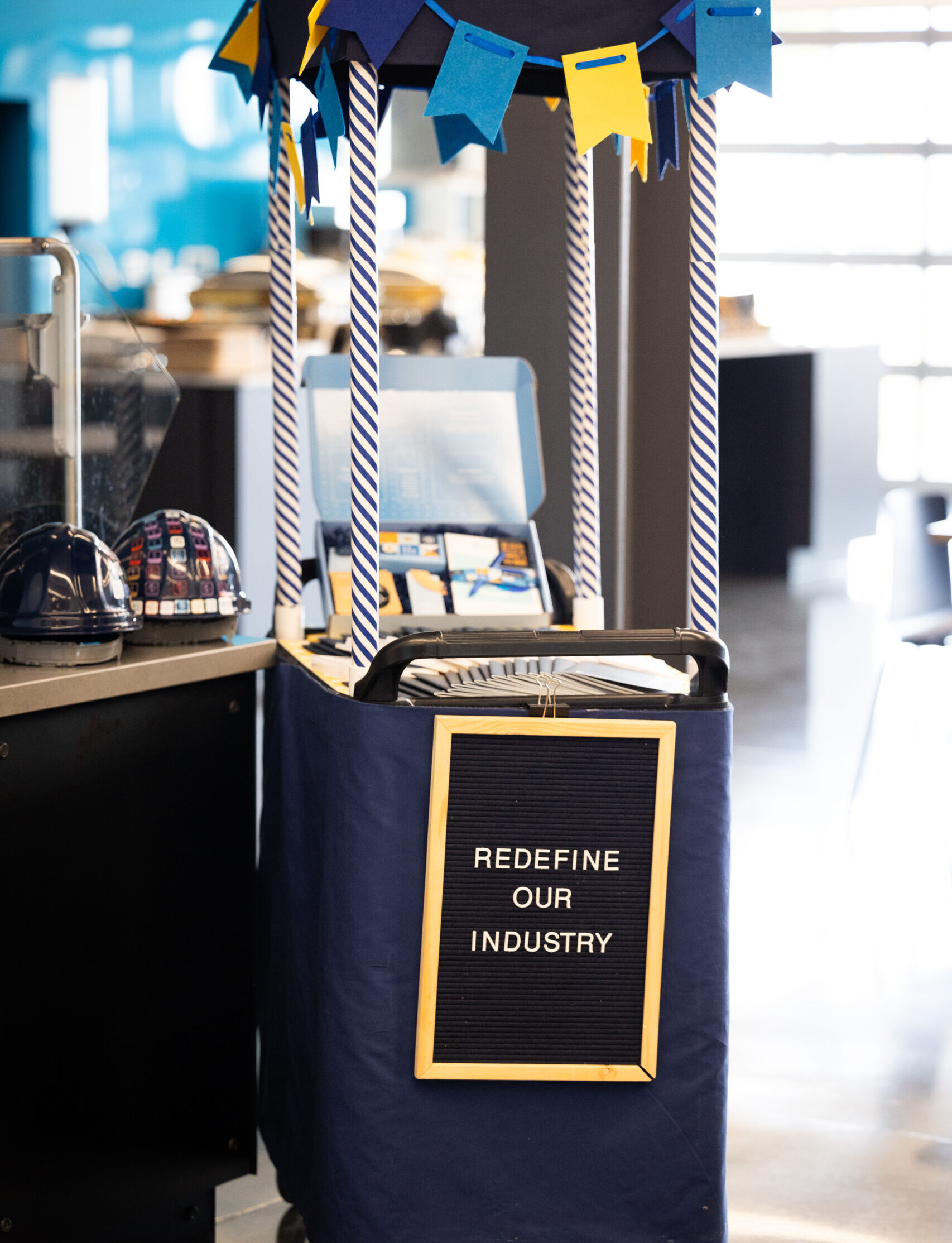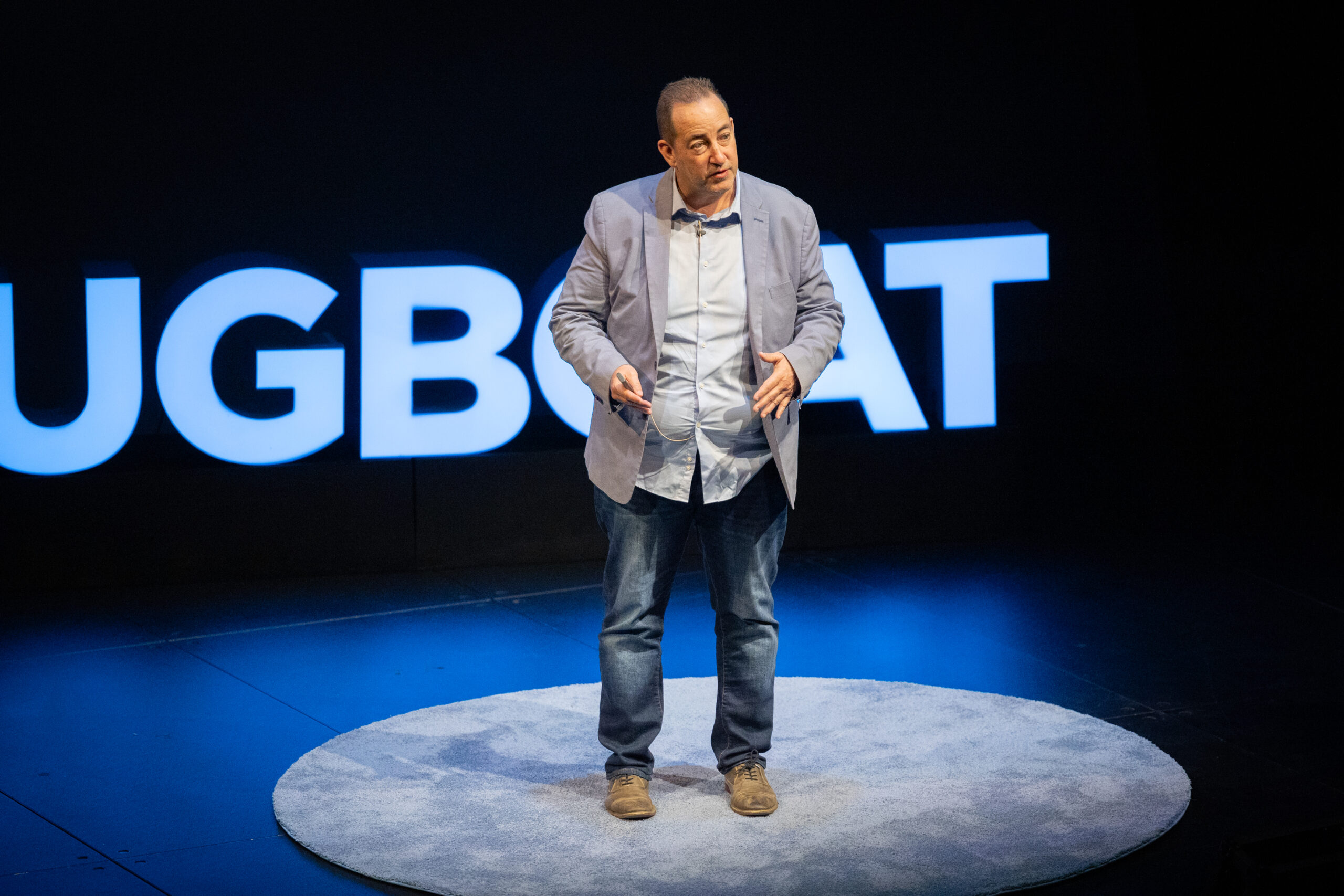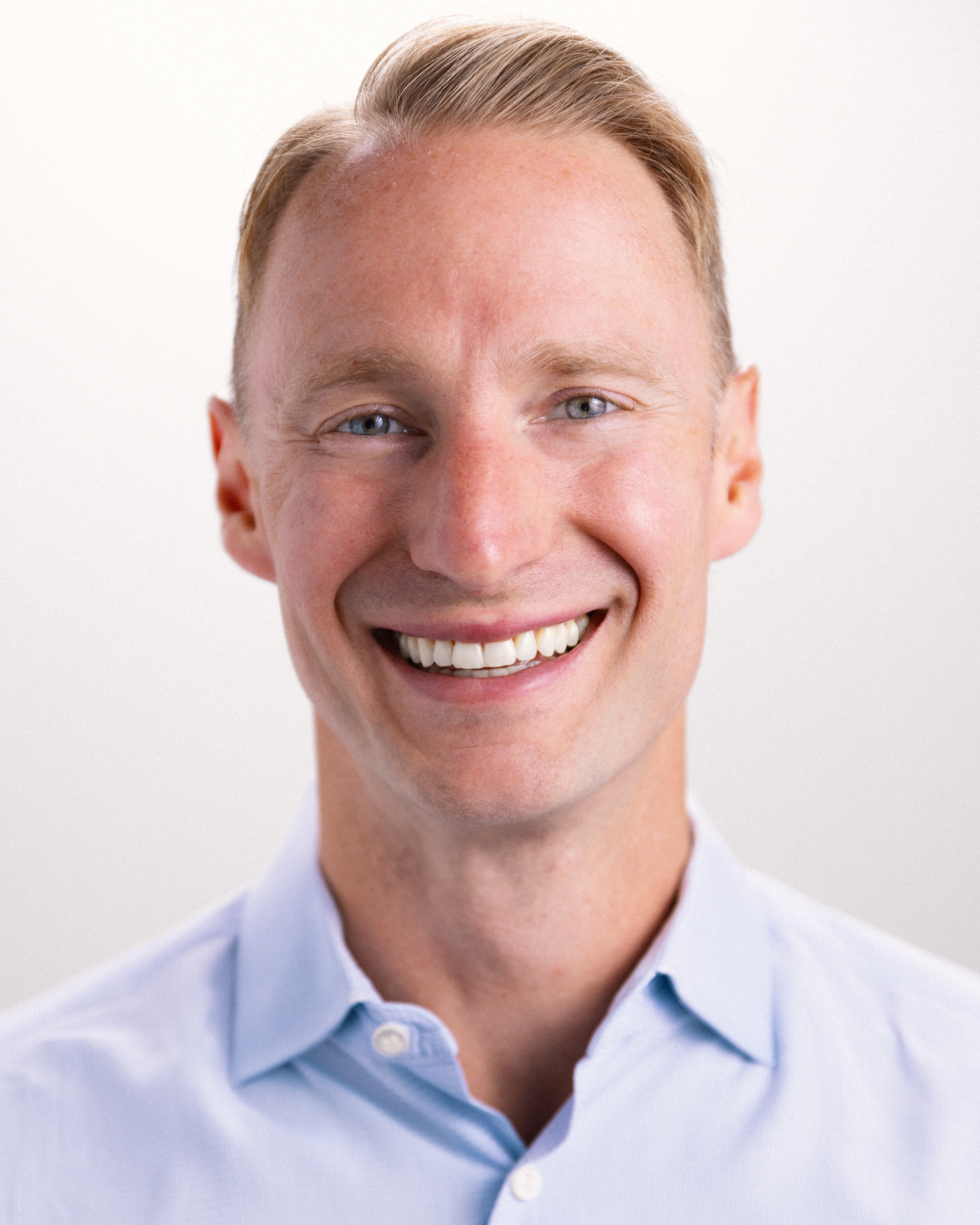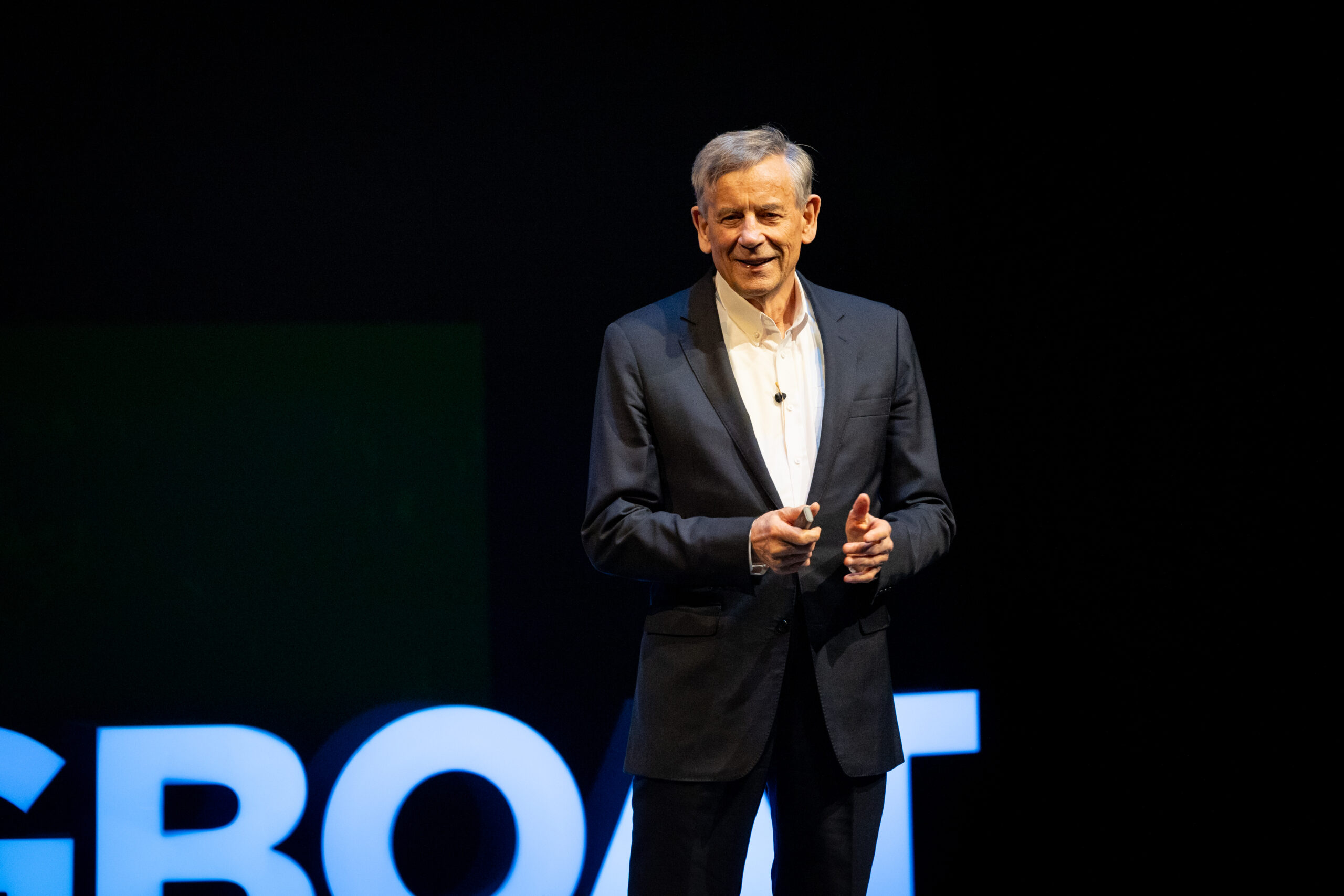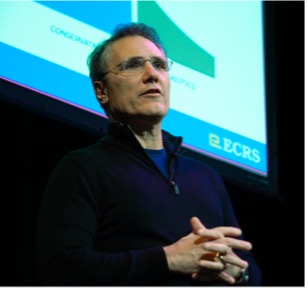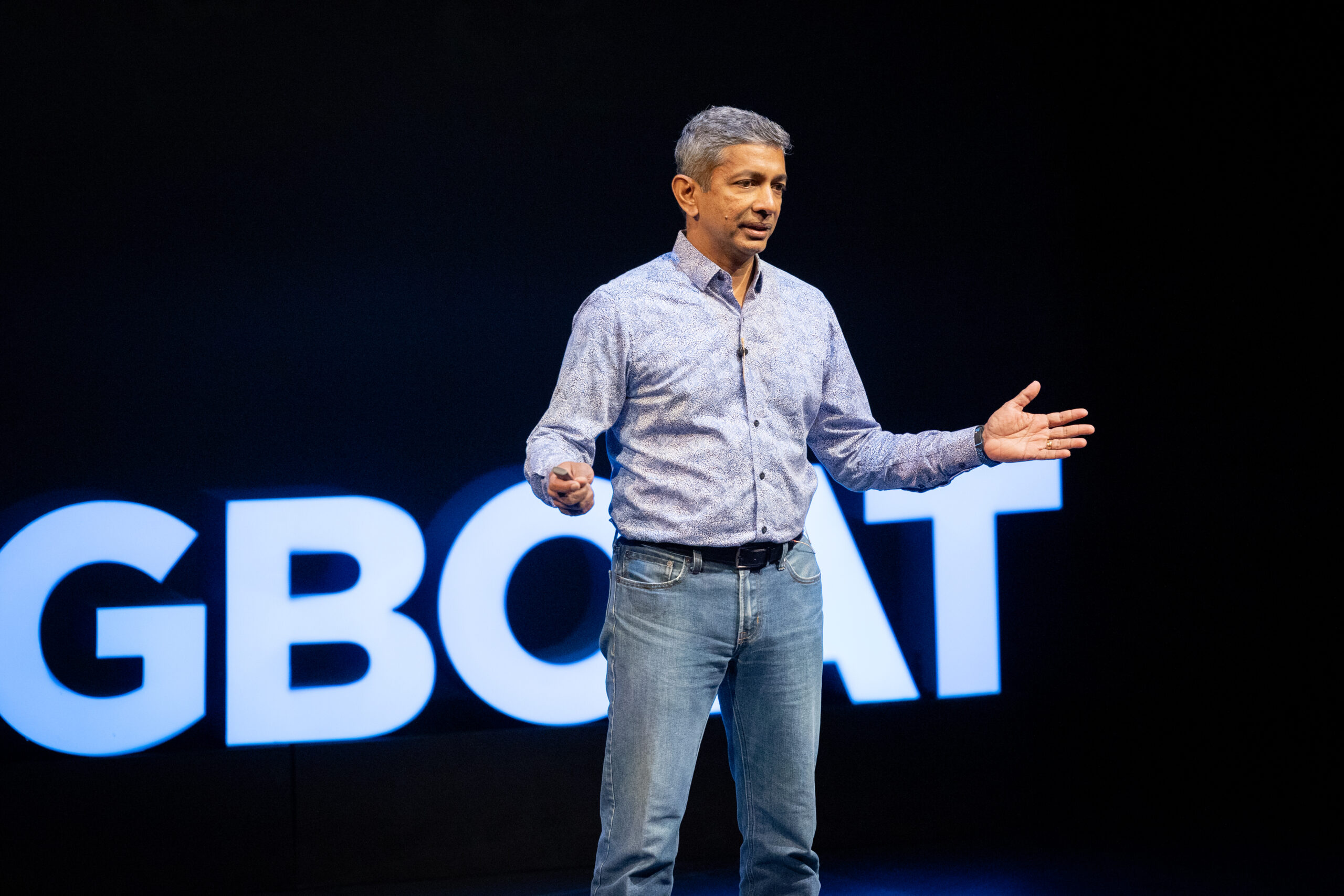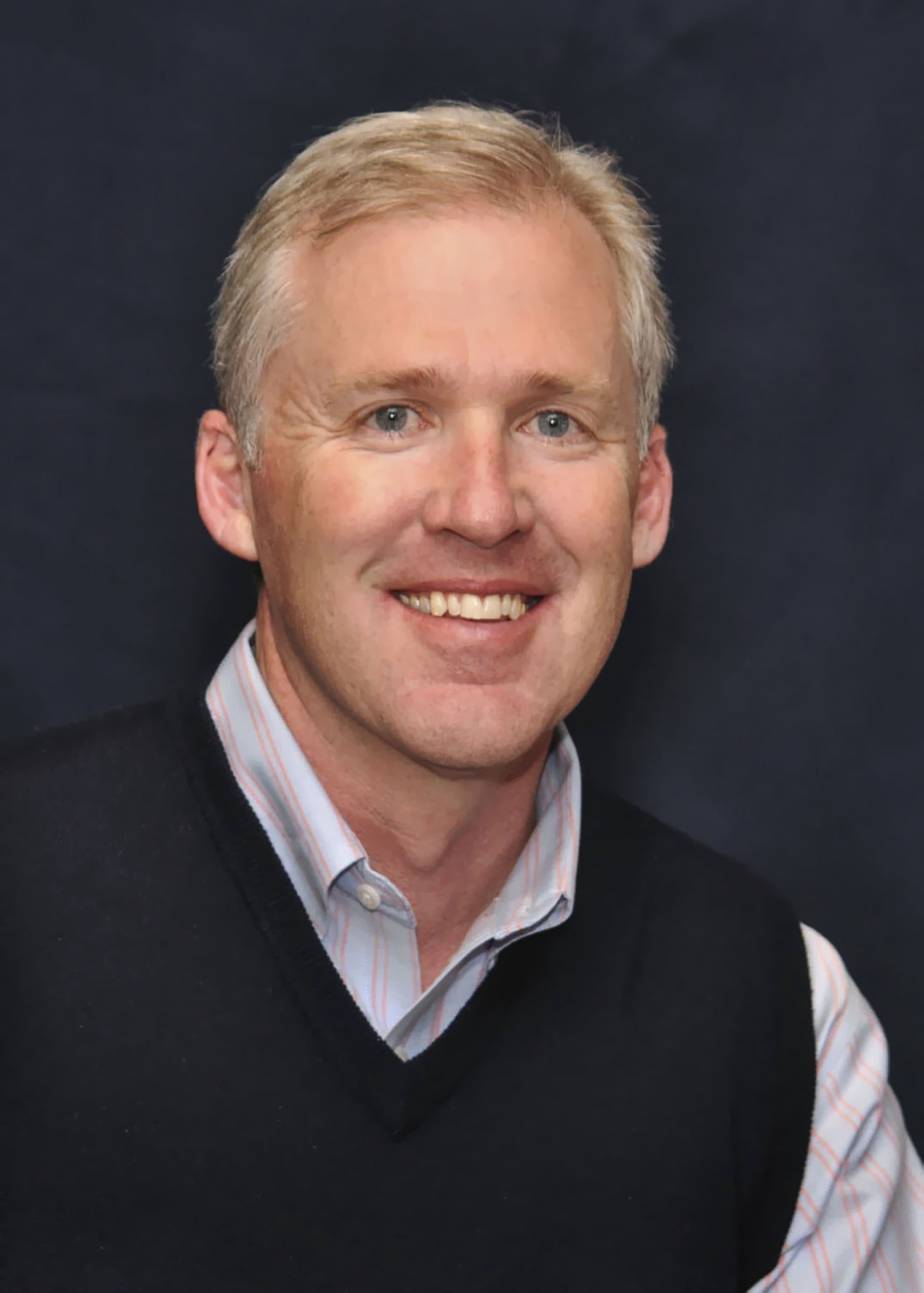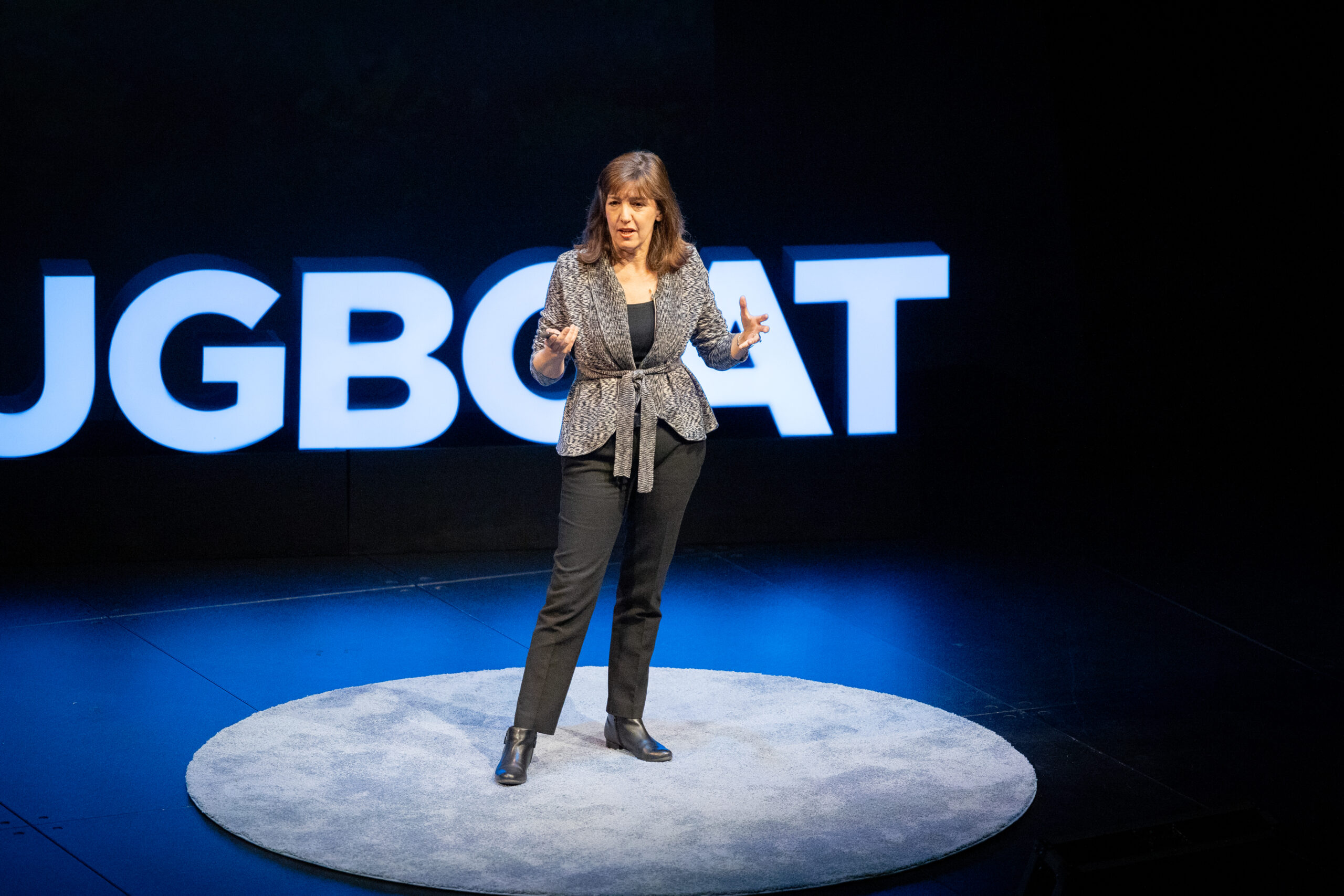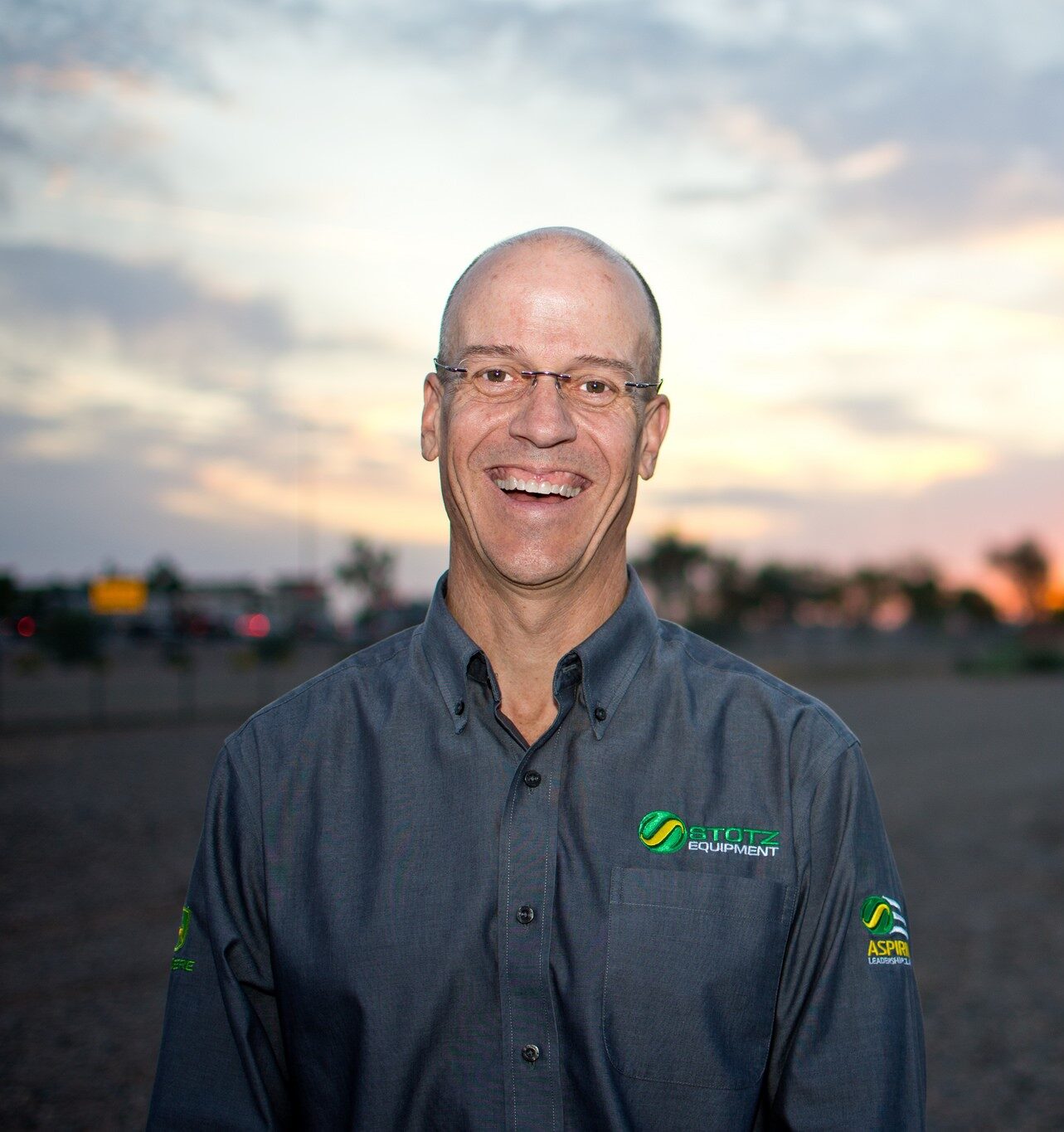The Secret Sauce: A Culture of Connection = A Thriving Organization
Tugboat Institute® member Kirk Aubry leads Savage, a transportation company based in Utah that moves and manages critical materials. In the years he has led the company, they have seen impressive growth. Rather than simply sit back and admire their success, Kirk asked himself, why? He spent dedicated time and effort exploring this question, and has reached a clear conclusion: connection.
In this Tugboat Institute talk, Kirk shares his belief that connection is, in his words, “The Secret Sauce” that has allowed for Savage’s success and growth. Connection amongst team members, with their customers, and with their community. This realization is, in many ways, a great confirmation of the Evergreen® model and mindset, because creating connection starts with communication, care, and a focus on People.
Watch and be inspired to examine and improve connection throughout your organization.
Redefining an Industry
Last week, our Tugboat Institute® members made the trip to Omaha, Nebraska, for Tugboat Institute @Supportworks to learn about this exemplary Evergreen® company, reconnect with value-aligned peers, and enjoy a taste of Omaha. Dave and Dan Thrasher, who are brothers, co-owners, and leaders of their second-generation family business, put together a remarkable program and experience for our group.
On Wednesday morning, Dan and Dave welcomed us all to their beautiful and impressive campus, where Supportworks, The Thrasher Group, Thrasher Partners, and their newest business, Hello Garage, are headquartered. We opened the first day with a fireside chat with Dan, Dave, and Tugboat Institute CEO Dave Whorton, during which they shared the story of their parents bootstrapping the business slowly, over three decades, before handing the reins to their sons. Dan and Dave dug in and grew it from a $4.5M business in 2004 to an over $400M revenue business this year. Although the business remained relatively small in the 29 years Greg and Nancy Thrasher ran it before their sons returned, that period was critical to its later growth and success. In those first three decades, Greg and Nancy moved their business to Omaha to serve a larger market, added foundation repair to their original basement waterproofing business, and learned how to be a dealer of another manufacturer’s products and later that same manufacturer’s distributor to other dealers. During this period, they built a local brand that was deeply trusted by their community based upon always doing the right thing by their customers and employees. From there, Dave and Dan shared how they founded Supportworks, scaled both it and the original Thrasher business, adopted M&A to respond to the entry of private equity into their space, and key lessons they learned in scaling the overall enterprise at over 20% annual compounded growth rate for the past two decades.
In the second talk of the morning, Dave Thrasher dove into the evolution of their business strategy, breaking it down decade by decade and highlighting critical milestones and decision points along the way. Amanda Harrington, President of Supportworks, took the stage next to share the story of the companies’ journey toward codifying, articulating, and integrating their Purpose, Redefine Our Industry, across the entire organization and in all strategy, planning, and business processes. Finally, Dave returned to the stage to end the day of talks with a deep dive into the catalysts for growth through acquisitions with their Evergreen M&A playbook.
Before we left the campus for the day, we were treated to a tour of their impressive shared headquarters with both Supportworks and Thrasher Group employees as our guides along the way. We could see the incredible attention paid to every detail, from the design of the office space to the layout of their warehouses. It was clear from the way their employees talked about their work that they are deeply dedicated to their Purpose, take pride in their work, company, and team, and enjoy and support each other.
On day two, Dan and Dave collaborated on a presentation about their recent experience launching a new vertical, Hello Garage. They were candid in sharing not only how they selected this vertical for expansion and their successes with this venture, but also the mistakes made along the way and the lessons learned. Next, Amanda Harrington returned to the stage to share how People First comes to life at all the Thrasher companies and shared the details of their essential people programs and processes. She offered numerous specific, actionable ideas that attendees could take away, tweak, and implement in their own businesses. The last formal presentation of the day was from Dan, who shared what it means to them to create and sustain a remarkable customer experience. He cautioned that CEOs should not delegate responsibility for making sure that it remains remarkable and that it’s a never-ending process of continuous improvement for the team. Anything less than fierce attention to this aspect of the business, Dan warns, creates significant risk to longevity.
Finally, as is our custom at our Tugboat Institute Exemplar visits, we finished the day with a Q&A with both Dan and Dave, moderated by Dave Whorton. The candor and transparency that had characterized the entire experience extended through this conversation, during which Dan and Dave addressed questions pertaining to their operations, as well as ownership succession, governance, family harmony, their working relationship, and the future of the company.
After each of our busy days, we gathered for celebration in some of Omaha’s most iconic spots, including, of course, a steakhouse on one night and the historic and breathtaking Durham Museum on another. Dan and Dave proudly shared their beautiful city with us, and our community reveled in the support, friendship, trust, shared values, and love that exemplify this extraordinary group of Evergreen leaders. Thank you, Dan and Dave, for a wonderful and powerful week of connection, inspiration, learning, and growth.
Culture is not Enough: Evergreens Need Strategy to Survive and Thrive
Jeff Patterson is the CEO and founder of Gaggle, an EdTech software company that exists to protect students in schools. As a company founder, he has fought hard to create and build Gaggle, and along with it an entire industry, and he has remained committed to the Evergreen® path throughout. However, as committed as he is to the Evergreen 7Ps® principles, he has had a nagging feeling for years that he needs more than a wonderful culture to survive for the long term.
In this Tugboat Institute® talk, Jeff shares his own journey toward creating a meaningful and effective strategy for Gaggle. After searching in vain for the “right” strategy, he embarked on his own learning journey, reading many books and talking with many leaders about the ingredients of an effective strategy. Here, he shares his learnings and explains why, in his eyes, culture is important, but without a strong strategy, it’s not enough.
Watch and be inspired to dig deeper in your efforts to create a strategy that is just right for your company.
The Power of Patience: Our Long-Term Talent Strategy
The years following the pandemic brought with them the tightest labor markets we’ve seen in decades. If you are paying attention to demographic data and the outlook for the coming decades, you know that this is not likely to abate soon. The quest for talent stands as a perpetual challenge; the pursuit of individuals who not only have the skills and experience we seek but who also bring fresh perspectives and untapped potential is a mission critical endeavor. At Force Factor, the global health company I founded 15 years ago, we have been tackling this challenge through an exciting and evolving initiative: robust internship programs and leadership development initiatives.
At Force Factor, we develop and sell nutritional supplements and formulas whose efficacy is founded in scientific research. However, we do not manufacture our own products. We are asset light, which has its advantages, but which also means that our people and the processes they help us create and maintain are, by far, our greatest asset. As an Evergreen® company with strong People First values, it is part of our strategic vision to build our company with our team. Our team is everything.
At 15 years old, Force Factor is still relatively young, but we have moved out of the beginning phases of company building. We have achieved a level of stability that allows me to lengthen my time horizons as I think and plan for the future. We compete against some giants, such as Nestle and Unilever, as well as a great many companies that have been acquired by private equity. In this competitive landscape, therefore, I am always asking myself, what is our greatest competitive advantage? Our greatest difference from most of our competition is our ability to think in long time horizons.
Because of our Evergreen orientation and because our people are paramount to our success, culture is critical. Paying attention to building culture is a long-term initiative. As a part of this, onboarding, training, and developing people is also something that takes time. There are advantages to hiring in people with deep experience in a specific area of leadership, and sometimes this is the right way to build out the team. But where possible, I find it is powerful and critical to building a strong culture to hire people early in their careers and invest in them, over time.
Like many companies, we have long had a summer internship program. As we considered strategy for team building and the future of our company, we have doubled down on this program, expanding its scope and objectives a great deal. Force Factor's internship ecosystem now includes four entry points tailored to various stages of academic and professional development.
At the core of this program is the summer internship program, providing college students with hands-on experience and exposure to the company's operations. This is our third year of scaling our internship program and it has grown significantly each of those three years. Last summer we had 11 interns, which was a jump from the year before, and we expect to see that number increase again this summer. We are a company of just under 50 employees, so this is quite significant. Our focus is hiring locally, because we figure these students had a college experience heavily impacted by covid and have spent quite a lot of the past few years online. We think the in-person experience is powerful for them, and it is easier to teach them the business when they are here with us. We are fortunate to be in Boston, which is home to a lot of great universities, so the pool we are drawing from is deep.
The next program we are piloting is called the Coop Program. The Coop program is something that has existed at Northeastern University for a long time and it is powerful and unique. Students at Northeastern are strongly encouraged – even required in some majors – to spend two to three semesters of their time in college doing a Coop, or an internship, for a company. The university has built an incredible network over the many years it has been doing this, and has partnerships with companies in Boston, across the US, and across the world. Students work full-time, are compensated, and receive college credit for their work. We’d been talking about participating in the program for a long time, and we finally jumped in. Our first three Coops started this winter. In a lot of ways their experience is similar to the summer interns, but it affords some advantages the summer positions do not. Coops are here for longer than the summer interns since they spend the whole semester with us. While the summer interns love being part of a large cohort, there is something powerful in the focus we can maintain on this much smaller group of Coops while they are here. We’re really excited about this and expect to see it develop in the future.
Beyond the internship and Coop programs, Force Factor also participates actively in recruiting recent college graduates. We do on-campus recruiting and hire for full-time positions. The students will graduate in May and start working with us in August through what we call our Leadership Development Program (LDP). For these hires, we have created a rotational program across six different functional groups, and all hires move through all six over the course of one year. They spend about two months in each one, and at the end of the first year, the have gained an education in the company that has both depth and breadth. At the end of that time, the hope is that there is strong Venn diagram overlap between a student and a department where they have really thrived and contributed. If this goes in both directions, we move that person permanently into that department. We are in the process of doing that now with the five hires from last year. We are refining it as we go, but basically, after completing the program, the new hire will come into their permanent department one level above where they would have if they had been just hired off the street straight into the job.
Finally, our fourth entry point is aimed at bringing in people who are a little less green. We are actively hiring people out of MBA programs for specific positions within the company as well. We have just hired two, one of whom has already started and one who will start at the end of the summer.
We have been paying attention to retention of the young people who come in through these various programs. The programs require a lot of time and investment from the current team and from the company. The idea is that many of them will come back and become full-time employees. We want to be careful not to become a school, where people come in, learn powerful lessons, and then say, “Thanks!” and head off to work somewhere else. We had this in mind as we designed the programs, and we work hard to give them an experience that will make the right ones want to come back. It’s early still, but it’s looking promising. The woman on our talent acquisition team, for example, who is working right now to hire the next class of interns, was our intern two years ago.
There are other tweaks and improvements we have made and will continue to make as we go forward, but we are getting better at this. The first hire is the hardest, and after that, as you take lessons from your experience, you learn and refine. For example, we hired a few people who, based on their resumes, looked like they were skilled in Excel, but they were not. We learned that it was important to control for specific skills that are important to us, so we have implemented a simple Excel test, and now we don’t have that problem anymore. Most importantly, as we gain experience and as a few intern cohorts pass through the program, it gains renown and popularity, which helps draw even better people the next time around.
While the immediate returns on hiring recent graduates may seem modest, and the cost and effort may not seem worth it to every company, the compounding effects over time are profound. By nurturing talent from the ground up, we not only instill our People First culture but also harness the potential for exponential growth. Moreover, with an emphasis on meritocracy and diversity, internship programs serve to inject fresh perspectives and innovative thinking into the organization. If you have an urgent problem and need someone with a specific skill to fix it, this is obviously not the best way to get there. But if you can operate with an Evergreen mindset and be patient, this could pay dividends over time. We are counting on it!
Hidden Champions: Success Lessons of the Most Secretive Global Market Leaders
When he was still researching and teaching at university in Germany, Professor Hermann Simon undertook to study the landscape of market leaders in exports around the world and in different industries, with the goal of identifying the characteristics of the companies that managed to find their way into that selective group. What he discovered surprised him; it was not the giants he expected who occupied the top spots. It was, instead, predominately middle market companies who remained relatively unknown who were the clear leaders. Many of them came from Germany.
In this Tugboat Institute® talk, Professor Simon shares key learnings from his work on his subsequent book, Hidden Champions: Lessons from 500 of the World's Best Unknown Companies. The Hidden Champions are different from Evergreen® companies, but they share some important and interesting characteristics. Professor Simon went a step beyond simply articulating his theory on Hidden Champions. Following publication of the book, he left the university and founded his own company, Simon-Kucher, which, following the steps he outlined in the book, he has grown into a Hidden Champion itself.
Watch this talk, consider the characteristics of the Hidden Champions, and see if any of them might help your company.
Passion Drives Industry-Changing Innovation
Even if you don’t own one, I imagine you are familiar with the KitchenAid mixer. It is a beautiful product: sleek, durable, made from highly recyclable materials, and built to last for a long, long time. I have had mine for about 35 years. Although I am CEO of ECRS, a company that specializes in retail automation for grocery store technology, such as point of sale, self-checkout, inventory, and supply chain, as well as the software that runs on a deli scale, one of our most important innovations in recent years was inspired by this product outside our industry – the KitchenAid mixer.
As an Evergreen® company, we are dedicated to Pragmatic Innovation and are always looking for opportunities to do what we do better. In this case, as is often true, innovation began with a seed of dissatisfaction, a spark that ignites a desire for change. I saw room for improvement, both in quality and sustainability, in the industry standard with which we had been working for years. Thus began the story of our AutoScale™ Max.
The most common point of sale products for grocery stores, whether they contain scales or not, are made from plastic. The standard labels have a backing to them because they must be adhesive, which means they produce a significant amount of waste. The standard scales we have used for ages, which we’ve typically bought from partners in China, are therefore able to hold a roll that will last maybe three days. They tend to run out when you are at your busiest, and it’s a pain to change them. For a long time, this was our reality; we bought the scales from China, loaded our software on them, and sold them to our customers. But I knew we could do better, and I found myself thinking about that KitchenAid mixer. I wanted something to match that in design, elegance, quality, and capacity.
As I started to imagine the product I wanted to build—one that would be the KitchenAid of scales—I knew a few things had to change from the norm. I wanted to build it to last, and it seemed that building it out of metal rather than plastic was the best bet. I also didn’t see why we couldn’t design something that could hold a bigger roll of labels. Not just a little bigger, but much bigger. Working with partners, we found a special label that didn’t require backing, so we were able to increase efficiency and reduce waste that way, but why couldn’t the roll in the scale be twice as big as the normal ones? Or bigger? I set the goal to develop something that could hold a roll of labels that was ten inches thick. That would represent an 11x increase in length and a very significant time savings for customers.
I was fixated on creating something excellent and I was willing to do whatever it took not just to build a product, but to revolutionize it. Design, functionality, and sustainability drove our team's quest, but our path was not without hurdles. Initially, we engaged a design firm whose work was terrible, and ultimately resulted in setbacks. The first prototype they created that could contain the ten-inch roll was much larger than competing scales, which was not the point at all. That phase of the project was frustrating and caused us to lose quite a bit of money. If I hadn’t been driven by such an intense passion to succeed, we might have given up. But we didn’t.
As we regrouped after the first failed design attempt, we happened to discover a local designer right here in my hometown of Boone, North Carolina. In terms of his experience and skills, he was younger with much less experience than our original design partner, but something stuck out to me: his passion. He seemed as excited as we were by the project, and thanks to our shared enthusiasm and expertise, we started to gain momentum.
One of the keys to our eventual success was the fact that our new design team had the brilliant idea to incorporate the Microsoft Surface Tablet into our new design. It is embedded into the scale and it’s extremely fast and powerful. Because of this integration, we tapped into Microsoft’s supply chain, and because they are making millions of these, the cost came down – something we had not necessarily expected. In the end, we managed to produce a gorgeous looking piece of equipment that is built like a KitchenAid mixer. It fits seamlessly into a deli, holds a ten-inch roll of labels, and is faster and more powerful than anything else out there—and built more cost-effectively by developing it with our own in-house team!
Once we innovated the machine itself, we were able to simply insert the software we had already developed into it. The software in the AutoScale Max is almost identical to the software we used in our other machines, meaning we hardly had to spend any money on the coding side of the innovation. Before the AutoScale Max, we mostly sold point of sale software, which is extremely similar to the scale software. Now, we can sell products for point of sale and scales. If a customer, for example, has ten point of sale lanes, we can sell them products for all ten and we can also sell them the ten scales they need. We just doubled our sales! That fact, combined with the lower cost of the new machine, has resulted in savings for our customers, increased sales, and thus increased revenue for ECRS to reinvest in more innovative solutions that continually serve our customers.
As an additional outcome of all this, this innovation has significantly reduced our dependence on China. This was not necessarily one of our initial goals, but because of increasing concerns over supply chain vulnerabilities and ethical considerations, this turned out to be an added bonus. Our relationship with our Chinese suppliers was not problematic, but it was primarily driven by concerns of cost, convenience, and efficiency above all else. With this innovation, we find that we can maximize all of these, and at the same time, bring production right back here to home.
What is the lesson here? What drove this innovation process? First, when I look back at the road we travelled from the idea to the finished product, I realize that it would not have happened without my own almost obsessive passion for it. And the fact that our second designer shared that same passion was key. The rest, honestly, was just great problem solving. The integration of the Microsoft Tablet was fortuitous, but that is just another example of hitting a roadblock and looking around for a creative way to overcome it. The answers often lie in unexpected places and are not always as hard as you think they’ll be. It’s funny how passion can drive a team to make hard things easy.
Business Health Checkup
When he was young, Jeff Chungath was torn between a career in medicine and one in engineering. So he compromised and became a biomedical engineer! With deep, combined clinical and technical expertise, Telligen, the company he leads, helps its clients improve the quality and value of their health care solutions. Thanks to his training and his natural inclination to think like an engineer, Jeff has created a superb culture of continuous improvement at Teligen, ensuring that feedback loops exist at every level of their work. In turn, this enables them to be nimble and to tackle inefficiencies as soon as they arise.
In this Tugboat Institute® talk, Jeff shares what this looks like at Telligen, and how it has helped them stay ahead of the curve, innovate constantly, and foster an energetic and healthy culture of innovation. A 100% Employee Owned Company, their mission is to improve health outcomes for everyone, and through their careful and precise processes, they are able to make steady and remarkable progress toward this goal.
Watch and be inspired to re-evaluate your internal feedback loops; could they be even better, and drive even better results?
Family Harmony in an Evergreen® Company
Family harmony and sustaining an Evergreen® business do not always jive. It takes hard work, even when all family members are mostly in sync. Learning ways to navigate these challenges has been one of the unexpected benefits I’ve gained from joining Tugboat Institute®. Here are some of the insights I’ve gained from many conversations with other multi-generational ownership groups.
If absolute family harmony - with siblings, children, cousins, nieces and nephews, in-laws - is your highest priority, it’s probably best to sell the business. The odds are, if you’re going to sustain your business over many generations (the essence of an Evergreen business), you will experience some degree of family discord. Not everyone will believe all decisions are “fair.”
The decision-making generation has the most responsibility to lay the groundwork to remain Evergreen and promote family harmony. Ideally, this would begin with the first generation, but that’s uncommon. Things get messier with each successive generation, especially if there is a lack of clarity about “family ground rules.” The generation in leadership must start from where they are.
There are a myriad of issues and possibilities to sort out. What are the criteria and expectations of ownership, governance, executive leadership, and employment? What is a “fair” way to distribute existing and future wealth? How, if at all, should those who work in the business be treated differently than those who don’t? Should “rules” be solidified in a trust, or should each successive generation have the flexibility to modify how things work?
There is no right way to transition ownership and leadership of a business from one generation to the next. The key is for the decision-making generation to own and communicate decisions – over and over. The next generation deserves and benefits from clarity and context. Too often, families don’t have those conversations and each person is left to create their own story.
These questions should be an explicit part of your work. They should be an agenda item at family meetings, holding company or business board meetings - whatever is most appropriate for your context. The work requires the same level of rigor as any other critical issue. And it is critical. Your Evergreen business needs clear answers in order to thrive.
When I stepped into leadership, our family business, High Plains Bank, did not have a clear set of “rules” to move from one generation to the next. In part, this is because the first two generations were small and intimate. Generations 1 and 2 included six people (grandparents; parents; uncle and aunt) who acquired the business together and worked closely for more than 30 years.
Generation 3 includes nine who are actively engaged but scattered about the state and country. Generation four includes as many as 15 (our family has a history of spouses getting involved) who are even more geographically dispersed and who don’t know each other well.
We must become far clearer on our “family ground rules” if we hope to sustain our Evergreen business for another three generations and beyond. If we don’t add clarity and cultivate an ownership mindset in the next generation, the level of the attachment to the business is likely to dissipate to the point that people are indifferent to being Evergreen.
Our family has been making progress. I realized at Tugboat Institute Gathering of Teams we still have much to do. With the help of Tugboat colleagues, I have a clearer sense of the work to be done and growing confidence that we can remain both Evergreen and a harmonious family.
I have been part of structured and informal Tugboat conversations with colleagues such as Jeet Kumar, George Giudici, Karen Keim, Steven Burger, Tom Rosztoczy, John Egger and my Tugboat Forum members, among others. Many of the Tugboat colleagues who have helped me sort through family issues may not remember these conversations. That’s the power of Tugboat’ Institute's design. Even informal conversations can provide transformative ideas.
24 Hours in the Life of a Healthy Kid
If you are a parent or if you ever watch the news, you are aware that, for years now, the conversation around kids and their mental health has become louder and more urgent. The effects of social media and our internet culture, paired with an increasingly prevalent culture of achievement in and outside of schools and the astoundingly isolating experience period during and after Covid have created a generation that struggles with anxiety, depression, and a host of other challenges.
In this Tugboat Institute® talk, Dr. Denise Pope, Senior Lecturer at Stanford’s Graduate School of Education and the co-Founder of Challenge Success, addresses this topic with a focus on potential solutions to this mental health crisis. How can we help our children build resilience and find balance and well-being? What practices that have become mainstream are, in fact, damaging to our young people today?
Watch and learn what you can do to make sure your children and other young people in your life are getting what they need to grow into strong, stable adults.
Revolutionizing our Health Care Plan Through Reference-Based Pricing
The economics of modern healthcare have become a labyrinth for employers to negotiate, usually annually, where costs typically spiral out of control year over year. In the face of these perpetually and rapidly rising costs, at Stotz Equipment, we have been seeking a better path – both for us and for our employees – for some time now. A few years ago, we hit on an innovative strategy that is proving extremely effective and successful: reference-based pricing (RBP). RBP has garnered attention in recent years for its potential to rein in healthcare expenses while ensuring quality care, so we decided to give it a try.
In short, through RBP, which we began offering as an option for our employees just three years ago, we have seen significant savings. Specifically, this year, in year three, I would estimate that at Stotz, we saved about 65% on health care costs with this plan. At the same time, we have been able to provide high quality health care to our employees, without compromise. It’s made a staggering difference.
As you consider whether or not this might work for your company, let’s begin by establishing a clear understanding of what RBP is and how it works. I am leaning on my CHRO, Jared Nielsen, as I lay this out.
RBP represents a departure from traditional models. Instead of relying on complex negotiations between insurers and healthcare providers to set a percentage discount on a service whose price may fluctuate wildly, RBP sets a predetermined reimbursement amount for medical procedures. The reference point is typically based on a percentage of what Medicare would pay for the same service. At Stotz, we aim for 150% of Medicare costs. RBP plans are administered by a third-party administrator (TPA), and variations do exist across different groups and regions, where targets may differ based on local dynamics.
In the traditional healthcare model, in addition to the inability of an employer or an employee to control or predict the cost of a given service, lack of choice is a limitation. If your preferred doctor is ‘out of network,’ you are out of luck. And for the company providing insurance, it is nearly impossible to control costs. Any efforts to keep employees’ costs relatively stable can mean huge, unexpected increases in costs for employers, often every year.
What does RBP actually look like in action? It’s not complicated. The employer, with the help of a TPA, sets the reference price for various medical services. Employees have access to this information, so they know what to expect. When the need arises, the employee seeks treatment, from whichever facility or provider they like. The insurance plan pays the healthcare provider the predetermined reference price. If the provider accepts the reference price as full payment, the process ends here. Occasionally, the provider will push back, which can lead to a process called ‘balance billing.’ More on that in a moment.
How much below standard prices will the RBP prices be? It varies widely, but usually, it’s between a 300%-700% difference, when you’re talking facility costs. Providers tend to be a little lower than that unless they’re specialty providers. The savings are felt on both the employer and employee side, at least at Stotz. Because we are an Evergreen® company, we share our successes with our employees no matter how we are winning. Therefore, the windfall created by these significant savings didn’t go straight to the company’s bottom line. Rather, we passed a great portion of it on to employees.
With the traditional plan, we cover most of the premium costs for the employee – $200 of $250 for an individual. The employee pays the remaining $50. When employees elect to enroll in RBP (it is optional at this point), we cover 100% of their costs. They are saving $50 per paycheck, or $100 per month. The savings for families are even deeper; the traditional plan starts at $260 per paycheck for a family, but with RBP, it drops to $50. Those on the family plans are saving over $400 per month.
Why aren’t 100% of our employees enrolled in RBP? There are several reasons that can help you, as a leader, decide if and how to implement this in your company. First, it is new and different, and often, people are wary of radical change like this, especially when it comes to something as important as health care. In the first year, we offered it as an option and about 50% of employees elected to enroll. Secondly, although the TPA has set a rate for service, this doesn’t mean that all providers will accept this right off the bat. This is where balance billing can occur. It is not uncommon for a big bill to arrive, and then the employee has the responsibility to bring it to the TPA and start the process of negotiating for a better price. This period of negotiating – balance billing – can take time. Employees might find it stressful to receive a series of huge medical bills and wait for a long time to have the negotiations resolve. These employees might prefer the traditional plan.
On the employer side, there are some downsides as well. Occasionally, a provider refuses to accept the TPA rate, and then we have to fight it. This is rare, and only happens in about 1% of claims, but it does happen. My team manages this when it happens, so it means time, effort, and therefore money for us. Occasionally, our team decides to settle and pay over the 150% of Medicare, and that is also a cost we bear, but again, it’s rare. Even when there is not a fight, employees are inevitably going to come to Human Resources when they have claims or bills that arrive and they are not educated on the process yet. So it does cost us, but the costs go down over time.
Despite initial hurdles and trepidation, RBP is gaining traction within our team. In year three, enrollment numbers have grown to about 2/3 of the company. This evolution underscores the growing acceptance and efficacy of RBP in mitigating healthcare costs. Our progress with this initiative so far is encouraging. I can envision a healthcare landscape where RBP becomes the norm at Stotz, obviating the need for traditional plans. The benefits are palpable: reduced administrative burdens once everyone gets used to the new program, stabilized premiums, and empowered employees making informed healthcare choices.
For us, reference-based pricing has been a game-changer in a healthcare landscape fraught with escalating costs. We are self-insured, and that is an important part of why this makes sense for us. Beyond that, the tolerance of your employees to try something new and the expertise on your team to manage the transition are the only other critical ingredients. It’s a great program. By anchoring itself on transparent reimbursement rates and empowering employees with cost-effective options, we believe that RBP could be the path to vastly improved affordability and accessibility in healthcare, not just for us, but for many companies.
